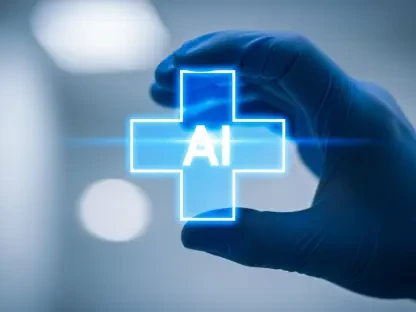I’m thrilled to sit down with Faisal Zain, a renowned expert in healthcare technology with a deep background in medical device manufacturing for diagnostics and treatment. Faisal has been at the forefront of innovation, transforming how clinics operate through cutting-edge solutions. In this conversation, we dive into the challenges of administrative burdens in healthcare, the power of AI-driven automation, and the remarkable ways technology can enhance patient care while restoring balance for providers. We’ll explore how these tools streamline operations, boost efficiency, and redefine the day-to-day experience in medical practices.
Can you share what a typical day looked like for you or the clinics you’ve worked with before adopting automation technologies?
Before automation, a typical day at many clinics was a juggling act. Physicians and staff were bogged down by repetitive tasks like scheduling appointments, managing patient records, and handling follow-up communications. I’ve seen firsthand how these responsibilities could eat up hours, often leaving little time for actual patient interaction. In my work with medical technology, I’ve consulted with clinics where doctors stayed late just to finish paperwork, which led to frustration and burnout. The focus was less on care and more on keeping the administrative machine running.
What tipping point made you or the clinics you’ve advised realize that administrative overload was unsustainable?
For many, it’s a gradual realization until a breaking point hits. I remember working with a practice where the lead physician described missing family events because of endless after-hours tasks. That personal toll, combined with seeing patient wait times grow due to inefficiencies, was a wake-up call. In my experience, when staff morale starts to dip and patient complaints about delays pile up, it becomes clear that something has to change. The administrative burden doesn’t just affect workflows; it impacts the entire ecosystem of care.
How did you first encounter AI-driven solutions for healthcare, and what initially caught your attention about their potential?
I came across AI-driven solutions while exploring ways to integrate smarter systems into medical device workflows. What struck me was their ability to not just store data but to anticipate needs and automate processes. For instance, patient scheduling tools powered by AI could predict peak times and allocate slots efficiently. I was initially skeptical about adoption—would staff resist change? But seeing how these platforms could free up time for patient care while reducing errors made me a believer. The human-centered design of some of these tools really stood out as a game-changer.
Can you walk us through the experience of integrating an automation platform into a clinic’s existing operations?
Integrating automation is a journey. Initially, there’s a learning curve—staff need training on the new system, and there can be hiccups with syncing existing electronic medical records. I’ve guided clinics through this, ensuring the setup aligns with their unique needs. Resistance is common at first; some staff worry about job security or tech complexity. But with clear communication about how it eases their workload, buy-in usually follows. The key is patience and support during the transition to make sure everyone feels confident using the tools.
How does having a high percentage of patients booking appointments online transform clinic operations?
It’s transformative. When patients book online, it cuts down on phone calls and front-desk workload dramatically. I’ve seen clinics go from handling hundreds of calls a day to almost none for scheduling. This shift allows staff to focus on in-person patient needs or other critical tasks. Plus, it empowers patients—they appreciate the convenience and control. Operations become smoother, with fewer no-shows since automated reminders often accompany these systems. It’s a win-win for efficiency and patient satisfaction.
Can you elaborate on specific administrative tasks that automation has taken off the plate for healthcare providers?
Absolutely. Tasks like appointment confirmations, intake form processing, and billing follow-ups are often automated now. I’ve worked with systems that handle these seamlessly, integrating with medical records to update patient data in real time. Before automation, these could take hours daily—think of manually calling patients to confirm slots or entering data by hand. Reducing that by even 70% means staff can redirect energy to supporting doctors or improving patient interactions. It also cuts down on human error, which is a huge bonus.
With an increase in patient volume, how can clinics maintain or even improve the quality of care using technology?
Technology plays a pivotal role here. With automation handling the repetitive tasks, providers can see more patients without feeling rushed. I’ve advised clinics that saw patient numbers rise by 30% or more, yet maintained care quality by using AI tools to triage needs and prioritize urgent cases. It’s not about replacing staff but empowering them with data to make better decisions. For example, automated systems can flag critical patient updates for immediate attention, ensuring nothing slips through the cracks even on busier days.
How significant is it for a clinic to wrap up the day with no backlog, and what impact does that have on the team?
It’s a game-changer. I’ve seen clinics where closing on time with no backlog—say by 4:30 p.m.—was unheard of before automation. Previously, staff would stay late tackling paperwork or unresolved scheduling issues, which bred stress and resentment. When technology clears that backlog, the team leaves with a sense of completion. It boosts morale and reduces burnout significantly. Doctors and staff can go home to their families without the weight of unfinished work, which is invaluable for long-term job satisfaction.
What is your forecast for the future of AI-driven automation in healthcare?
I’m incredibly optimistic. I believe we’re just scratching the surface of what AI can do in healthcare. In the next decade, I foresee even deeper integration—think predictive analytics not just for scheduling but for patient outcomes, helping doctors preempt issues before they escalate. We’ll likely see AI systems becoming more intuitive, learning from individual clinic patterns to offer tailored solutions. The focus will remain on balancing efficiency with the human touch, ensuring technology supports, rather than overshadows, the provider-patient relationship. It’s an exciting time to be in this space.









